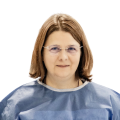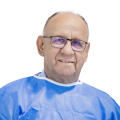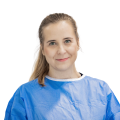MASTER COURSE
The administrator of your personal data is Akademia Osteopatii based in Poznań at ul. Marcelińskiej 92, NIP 7361517194. Detailed information on the processing of your personal data can be found in the Regulations and Privacy Policy.
Teachers

Agnieszka Ziółkowska
PhD in Medical Sciences, Professor at University of Zielona Gora
Sectional anatomy

Leszek Porowski
PhD
Sectional anatomy

Agnieszka Kilanowska
PhD
Sectional anatomy
Curriculum
The Academy's educational programme is based on the standards used in the greatest osteopathic schools in the world and covers over 2,000 teaching hours within 44 seminars during the 4.5-year teaching cycle.
MORE INFOTitle DO
After completing the 4.5-year curriculum, you get the opportunity to write a diploma thesis and become a certified osteopath with the degree as a Doctor of Osteopathy (DO).
MORE INFOLocation
The Academy of Osteopathy operates in: Poznań, Krakow, Warsaw, Wrocław, Gdańsk and Lublin
MORE INFO



